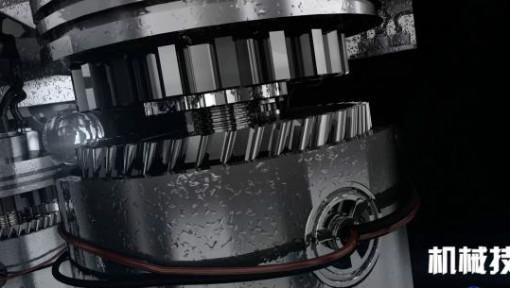课程简介
《机械技术基础》课程是是一门介绍常用机构和通用零件的基本知识和基本方法的技术基础课。主要内容包含机械结构自由度、连杆机构、凸轮机构、齿轮结构和机构、轮系传动比、轴、连接、轴承、皮带传动及链传动等。其主要任务在于培养学生掌握机构和机械零部件方面的基本知识、基本理论和设计方法,使其在设计构思和设计技能方面得到基本训练。
此课程融合国内外经典教材内容和案例,英语展示,汉语阐述,可以让学生从中外两个角度了解理解机械技术相关内容。
课程大纲
绪论 (Introduction)
1.1.机械工程设计的历史和现状(History and status of mechanical engineering design) ;
1.2.机械设计过程(Design process);
1.3.常见机械零部件和专用零部件介绍(General and special mechanical elements)。
机械静力学分析1(Kinematics fundamentals 1)
2.1.t静力学分析中零部件运动的类型(Types of motion of mechanical parts);
2.2.t零部件连接的类型、运动副及其分类(Types of joints , motion pairs);
2.3.t连接导致引入的约束个数计算(Links, joints, kinematic chains and constraints)。
机械静力学分析2 (Kinematics fundamentals 2)
3.1.t机构运动简图的画法(Kinematic diagram of mechanism);
3.2.t自由度的介绍,机构自由度计算公式(Degrees of freedom (DOF),Calculation of DOF);
3.3.t机构具有确定运动的条件(Determine the conditions of motion.);
3.4.t复合铰链、局部自由度和虚约束三种情况下的机构自由度计算方法(Multiple joint, Passive DOF and useless constraints)。
3.5.t通过实例进行自由度计算(Calculation of DOF)。
连杆机构(Graphical Linkage Synthesis)
4.1.了解连杆的类型(Types of Graphical Linkage );
4.2.曲柄存在的条件( Condition of the existence of the crank);
4.3 .压力角和传动角( Pressure angle and transmission angle);
4.4. 急回特性(Quick return);
4.5.死点位置( locked point )。
失效与预防(Failure Prevention)
5.1.t对结构施加载荷的类型(Types of loading);
5.2.t零部件的失效类型(Types of failure);
5.3.t载荷和失效的关系(Relationship between loading and failure);
5.4.t失效的预防措施 (prevention of failure)。
轴(Shaft)
6.1.t轴的类型和应用领域(Types and application of shaft);
6.2.t轴的结构和轴上零件的定位与固定(Shaft layout);
6.3.t轴设计的主要内容和步骤(Shaft design for stress);
6.4. 通过实例进行轴结构的分析(Shaft layout analysis with an example)。
滚动轴承(Rolling-contact bearings)
7.1.t滚动轴承的组成、工作特点、类型、代号(Rolling-contact bearings, Bearing types and symbol );
7.2.t滚动轴承的载荷、失效、寿命和可靠性(Bearing load, life and reliability).
齿轮1(Gear1)
8.1.t齿轮的类型和术语(Types of gears);
8.2.t齿轮实现定角速比传动的条件和传动比计算 (Transmission ratio);
8.3.t渐开线齿廓性质和重合度(Involute properties and contact ratio);
8.4.t齿轮的几何尺寸计算和最少齿数的形成(Geometric dimensions calculations and the forming of gear teeth);
8.5.t通过实例进行齿轮系传动比计算(Calculation of Transmission ratio of gear trains)。
齿轮2(Gear2)
10.1.凸轮机构的应用和类型(Types and application of cam);
10.2.从动件的常用运动规律(Critical path motion (CPM));
10.3.凸轮机构的压力角和传动角以及曲率(Pressure angle and radius of curvature);
10.4.凸轮轮廓的设计(Design method and process of cam);
凸轮(Cam)
10.1.凸轮机构的应用和类型(Types and application of cam);
10.2.从动件的常用运动规律(Critical path motion (CPM));
10.3.凸轮机构的压力角和传动角以及曲率(Pressure angle and radius of curvature);
10.4.凸轮轮廓的设计(Design method and process of cam);
连接(Joints)
11.1.非永久性连接和永久性连接的定义、实例和应用(Definitions, examples and applications of nonpermanent joints and permanent joints);
112.标准螺纹的定义、分类和应用(Definitions, types and applications of bolt);
11.3.螺栓的预紧和防松(Preload and anti-loose);
11.4.螺纹连接的失效形式和设计计算 (fatigue and design of bolt).
柔性连接(Flexible joints)
12.1.皮带的类型和应用场合(Types and application of belts );
12.2.V带的结构和设计过程(Structure of V belt);
12.3.链条的类型和应用场合(types and application of roller chain);
1.1.机械工程设计的历史和现状(History and status of mechanical engineering design) ;
1.2.机械设计过程(Design process);
1.3.常见机械零部件和专用零部件介绍(General and special mechanical elements)。
机械静力学分析1(Kinematics fundamentals 1)
2.1.t静力学分析中零部件运动的类型(Types of motion of mechanical parts);
2.2.t零部件连接的类型、运动副及其分类(Types of joints , motion pairs);
2.3.t连接导致引入的约束个数计算(Links, joints, kinematic chains and constraints)。
机械静力学分析2 (Kinematics fundamentals 2)
3.1.t机构运动简图的画法(Kinematic diagram of mechanism);
3.2.t自由度的介绍,机构自由度计算公式(Degrees of freedom (DOF),Calculation of DOF);
3.3.t机构具有确定运动的条件(Determine the conditions of motion.);
3.4.t复合铰链、局部自由度和虚约束三种情况下的机构自由度计算方法(Multiple joint, Passive DOF and useless constraints)。
3.5.t通过实例进行自由度计算(Calculation of DOF)。
连杆机构(Graphical Linkage Synthesis)
4.1.了解连杆的类型(Types of Graphical Linkage );
4.2.曲柄存在的条件( Condition of the existence of the crank);
4.3 .压力角和传动角( Pressure angle and transmission angle);
4.4. 急回特性(Quick return);
4.5.死点位置( locked point )。
失效与预防(Failure Prevention)
5.1.t对结构施加载荷的类型(Types of loading);
5.2.t零部件的失效类型(Types of failure);
5.3.t载荷和失效的关系(Relationship between loading and failure);
5.4.t失效的预防措施 (prevention of failure)。
轴(Shaft)
6.1.t轴的类型和应用领域(Types and application of shaft);
6.2.t轴的结构和轴上零件的定位与固定(Shaft layout);
6.3.t轴设计的主要内容和步骤(Shaft design for stress);
6.4. 通过实例进行轴结构的分析(Shaft layout analysis with an example)。
滚动轴承(Rolling-contact bearings)
7.1.t滚动轴承的组成、工作特点、类型、代号(Rolling-contact bearings, Bearing types and symbol );
7.2.t滚动轴承的载荷、失效、寿命和可靠性(Bearing load, life and reliability).
齿轮1(Gear1)
8.1.t齿轮的类型和术语(Types of gears);
8.2.t齿轮实现定角速比传动的条件和传动比计算 (Transmission ratio);
8.3.t渐开线齿廓性质和重合度(Involute properties and contact ratio);
8.4.t齿轮的几何尺寸计算和最少齿数的形成(Geometric dimensions calculations and the forming of gear teeth);
8.5.t通过实例进行齿轮系传动比计算(Calculation of Transmission ratio of gear trains)。
齿轮2(Gear2)
10.1.凸轮机构的应用和类型(Types and application of cam);
10.2.从动件的常用运动规律(Critical path motion (CPM));
10.3.凸轮机构的压力角和传动角以及曲率(Pressure angle and radius of curvature);
10.4.凸轮轮廓的设计(Design method and process of cam);
凸轮(Cam)
10.1.凸轮机构的应用和类型(Types and application of cam);
10.2.从动件的常用运动规律(Critical path motion (CPM));
10.3.凸轮机构的压力角和传动角以及曲率(Pressure angle and radius of curvature);
10.4.凸轮轮廓的设计(Design method and process of cam);
连接(Joints)
11.1.非永久性连接和永久性连接的定义、实例和应用(Definitions, examples and applications of nonpermanent joints and permanent joints);
112.标准螺纹的定义、分类和应用(Definitions, types and applications of bolt);
11.3.螺栓的预紧和防松(Preload and anti-loose);
11.4.螺纹连接的失效形式和设计计算 (fatigue and design of bolt).
柔性连接(Flexible joints)
12.1.皮带的类型和应用场合(Types and application of belts );
12.2.V带的结构和设计过程(Structure of V belt);
12.3.链条的类型和应用场合(types and application of roller chain);
关
注
我
们


